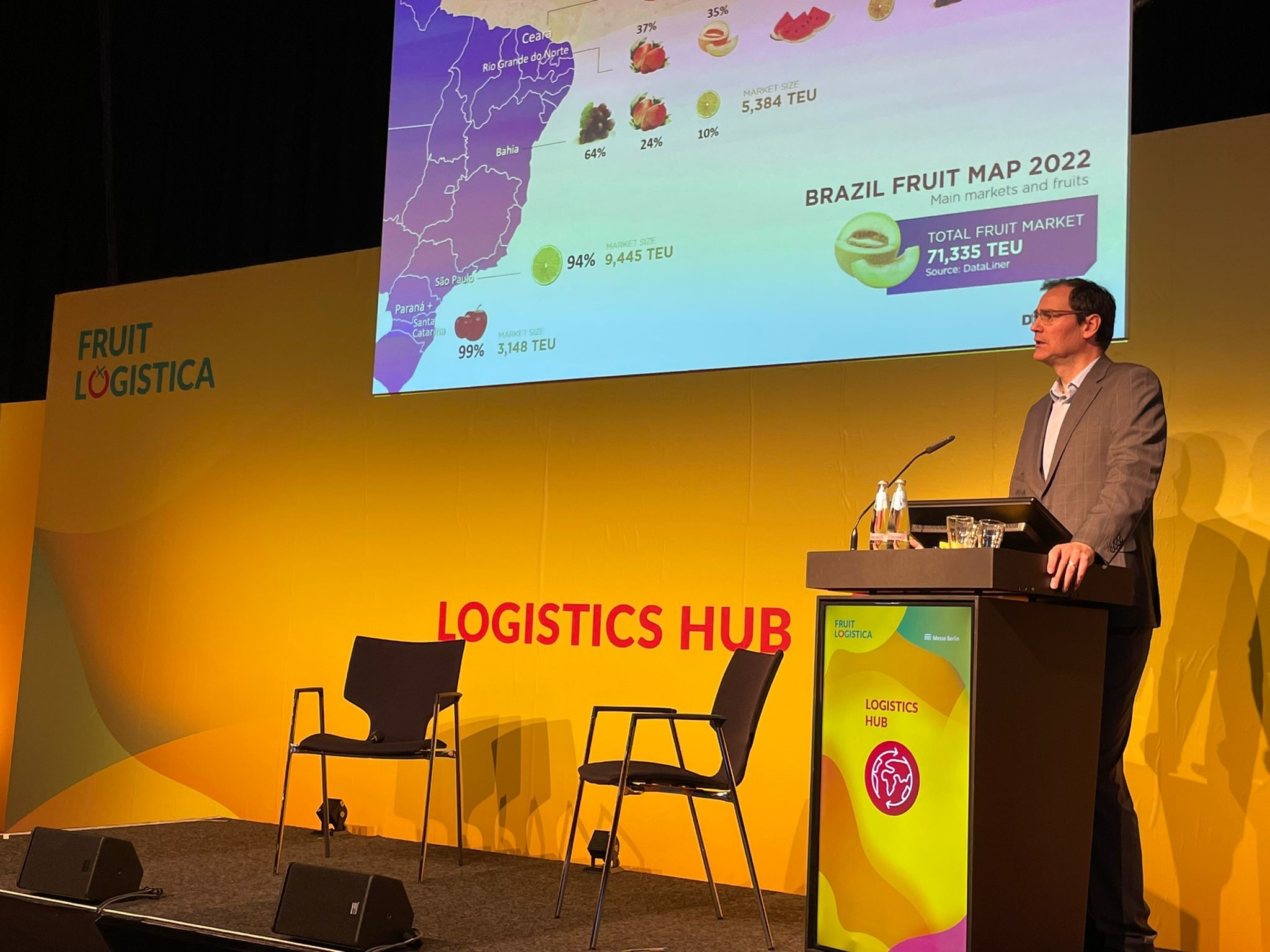
Reefer market: stable yet with a downward trend in rates
Mar, 16, 2023 Posted by Gabriel MalheirosWeek 202313
“It may be a bit boring,” says Philip Gray, reefer analyst with Drewry Shipping Consultants, focussed on shipping analysis, about the reefer market. During his presentation at Fruit Logistica he adds that after a few eventful logistical years, boring is not a bad thing. “Shippers need stability as produce is expensive these days to produce.” The reefer analyst foresees that rising prices could lead to changes in the fresh produce trade as well.
“In the days of an abundance of container space and cheap stuff, a lot of produce would be sent overseas on speculation, which was really not required by the market. That also kept the produce prices pretty low. It was just too cheap. Maybe now it will be a bit more in balance.”
Drop in fruit exports
“The reefer market proved resilient in 2022, with estimated seaborne trade of perishable reefer commodities reaching 138,6 million tonnes. Meat remains the largest seaborne commodity, accounting for 22 percent of the trade, followed by bananas at 15 percent and fish at 14 percent.” Those figures prompt Philip to mention that the number one reefer cargo, protein, is also where to look in terms of competition for space and pricing, where seasonality also plays a role. Although still the most traded fresh produce commodity, the reefer transported volume of bananas fell during 2022 and Philip expects a continuation of that situation.
Philip notes that reefer container rates have passed their peak in Q3 of 2022. He sees the reefer rates coming down, but as they did not rise as much as the dry cargo rates, he expects them not to decrease as hard either. Besides this downward trend, the reefer analyst expects seasonality as well as different trade lanes to play a role in the rate fluctuations. He also observes that, where during the pandemic perishables had to compete with dry cargo for container space, this is no longer the case, since that part of the supply has eased. This development also leads to the possibility of moving containers out of China again.
Andrew Lorimer, CEO of Datamar, focussing on shipping and trade intelligence, sees a drop in fruit exports. In his Fruit Logistica presentation he focusses on South American countries and notes that conflict in Ukraine led to inflation with the influence of that on the disposable income of Europeans causing a big drop in demand for fruit. “Fruit takes less of a priority, becoming maybe a bit of a luxury good.”
Andrew mentions that where the number one South American (Argentina, Brazil, Chile, Paraguay and Uruguay) export reefer cargo – meat; mounting to 9,8 million tonnes in 2022 – used to compete with fruit – a market of almost 4 million tonnes – for container space and rates, this appears to be no longer the case. The CEO sees a combination of less demand because of the dropping fruit exports in combination with the wider availability of containers.
Datamar mentions that fruit exports from Brazil, after years or growth, fell by a whopping 24.4 percent in 2022 compared to 2021. In 2022 Brazilian fruit exports amounted to 9,8 percent of all reefer transports.
See below the exports of fruits (hs 0800 – 0812) shipped from Brazil in containers between Jan 2019 and Jan 2023, according to Datamar’s DataLiner.
Fruit exports from Brazil | Jan 2019 – Jan 2023 | TEUs
Source: DataLiner (click here to request a demo)
Specialised reefer vessels
Although containers take the lion’s share of the cargo, there is some development on reefer specialised vessels. Andrew Lorimer notes that last year five percent of the cargo switched to reefer vessels in Brazil and in Chile some 10 percent is taken in break bulk. “Last year a big exporter of melons switched over from reefer containers to reefer vessels. That hadn’t happened in Brazil for a very long time.”
It makes the Datamar CEO wonder if these developments could lead to growth for specialized reefer vessels? Although there are some new builds, he concludes that given the size and the age of the fleet, it is not a long term solution right now. He observes that the changeover last year in Brazil and Chile was mainly driven by the bad operations surrounding containerised transports of which he expects a much smoother situation going forward.
Source: FreshPlaza
To read the original reporting, please visit: https://www.freshplaza.com/north-america/article/9510071/stable-reefer-market-with-a-downward-trend-in-rates/
-
May, 18, 2020
0
China opens its market to Chilean citrus fruit exports
-
Other Cargo
Oct, 16, 2024
0
Brazil’s egg exports jump 20% from August to September
-
Fruit
Jun, 05, 2023
0
Argentine citrus to enter the U.S. market
-
Grains
Dec, 09, 2022
0
Anec: Brazil to double exports in 2022 to 42.6 million t

